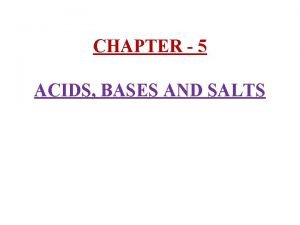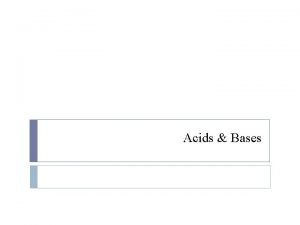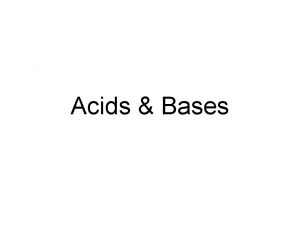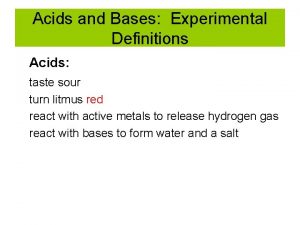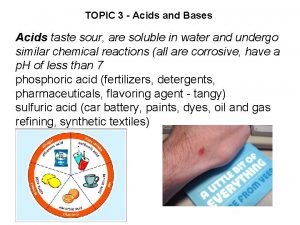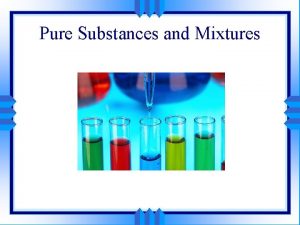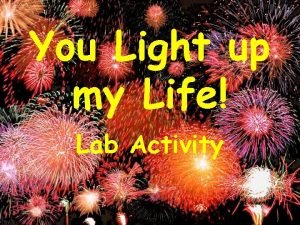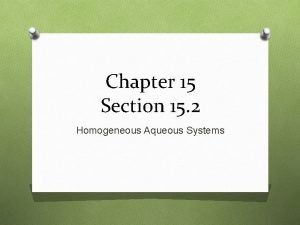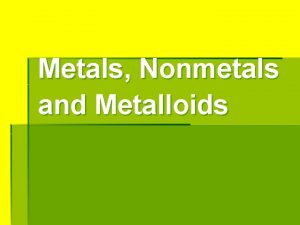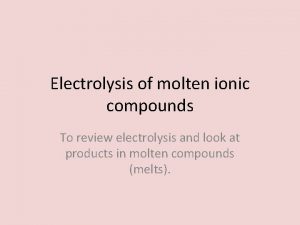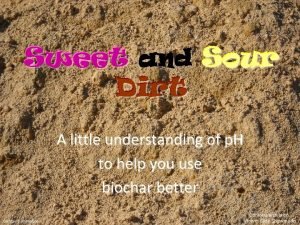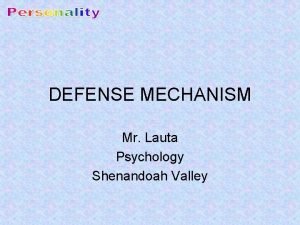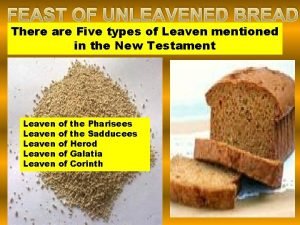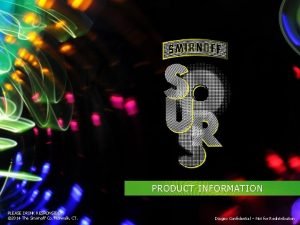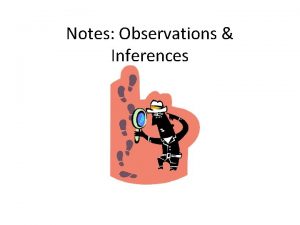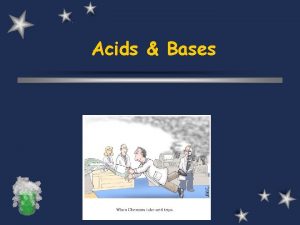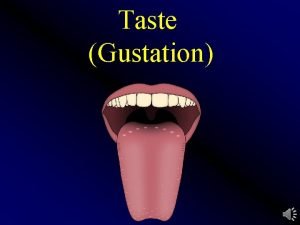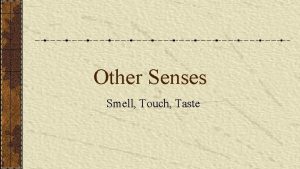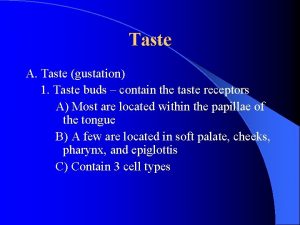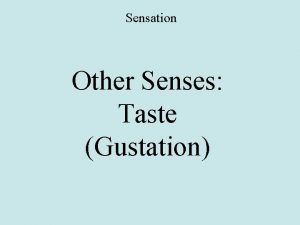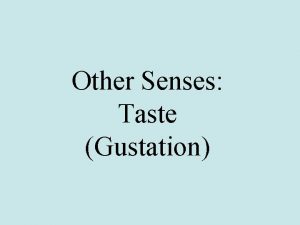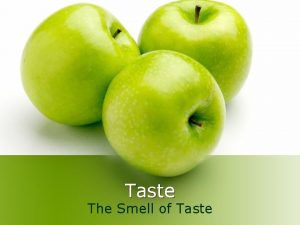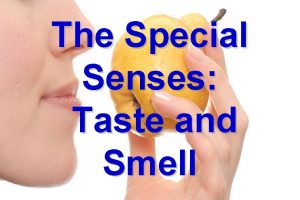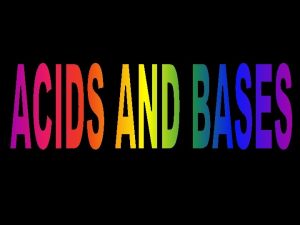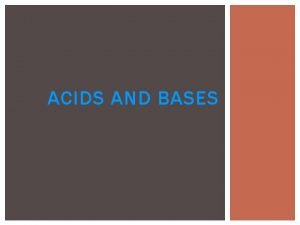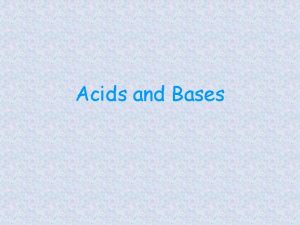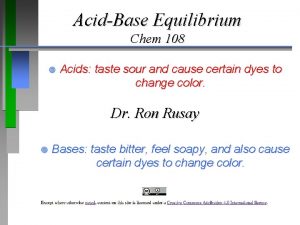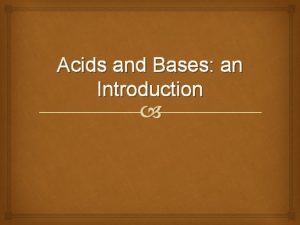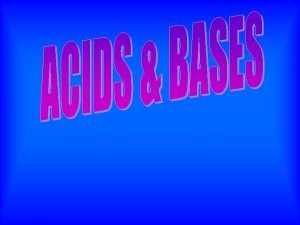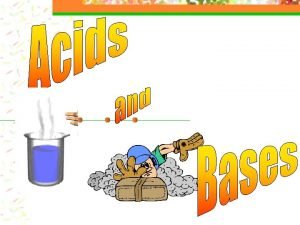Taste sour n Form solution that conduct electricity
























![Ex : calculate [H+] or [OH-] as required for each of the following at Ex : calculate [H+] or [OH-] as required for each of the following at](https://slidetodoc.com/presentation_image/16968098667dbf5136170368306ac5e9/image-25.jpg)
![b) 10. 0 M H+ Find: OHSolution: [H+][OH-] = 1 x 10 -14 [OH-] b) 10. 0 M H+ Find: OHSolution: [H+][OH-] = 1 x 10 -14 [OH-]](https://slidetodoc.com/presentation_image/16968098667dbf5136170368306ac5e9/image-26.jpg)
![1. Which is greater [OH-] or [H+] , if [H+]= 2. 8 x 10 1. Which is greater [OH-] or [H+] , if [H+]= 2. 8 x 10](https://slidetodoc.com/presentation_image/16968098667dbf5136170368306ac5e9/image-27.jpg)



![In Basic solution, [OH-] can be expressed as p. OH n p. OH = In Basic solution, [OH-] can be expressed as p. OH n p. OH =](https://slidetodoc.com/presentation_image/16968098667dbf5136170368306ac5e9/image-31.jpg)




- Slides: 35


Taste sour n Form solution that conduct electricity n React with metals n Turn blue litmus paper to red n React with bases to form salt and water n Ex: fruit juice, vinegar, milk n

n n n Form solutions that conduct electricity Slippery or soapy in the skin Taste bitter Turn red litmus paper to blue Reacts with acids to form salt and water Ex: soap, shampoo, cleaning agent

Arrhenius Theory By Svante August Arrhenius n Acids form hydrogen ion(H+) in aqueous solutions n Bases form hydroxide ion (OH-) in aqueos solution n Ex: HCl(g)-----> H+(aq) + Cl-(aq) n KOH -----> K+ + OH-(aq)

Bronsted-Lowry Denition By Johannes Bronsted and Thomas Lowry n Acid is a proton donor n Base is a proton acceptor n Ex: n HCl + H 2 O ---> H 3 O + Cln NH 3 + H 2 O n

Bronsted-Lowry Definition n The general reaction when an acid is dissolved in water is best represented by an acid donating H+ to water molecule to form a new acid (conjugate acid) and a new base( conjugate base) acid. n base conjugate Acid Conjugate base HA(aq) + H 20(l) ----> H 3 O+(aq) + A-(aq)

Ex: HCl + H 2 O ---> H 3 O+ + acid base conjugate acid Cl- conjugate base

Identify the acid and the base in the following reactions: n n a) b) c) HSO 4 - + PO 43 - ---> HO 42 HNO 3 + H 2 O ---> H 3 O + H 3 PO 4 + CN- ---> H 2 PO 4 Answers Acid base HSO 4 PO 43 HNO 3 H 2 O HCN H 2 PO 4 - + SO 42+ NO 3+ HCN

Conjugate Acid-base pair n Consists of two substances related to each other by donating and accepting of a single proton Acid-conjugate base pair Ex: HCl(aq) + H 2 O(l) H 3 O+ + Cl. Base-conjugate acid pair H 3 O+ --> hydronium ion

Which of the following represent Conjugate acid-base pair? A) HF, Fn B) NH 4+, NH 3 n C) HCl, H 2 O n Answer A and B are conjugate acid base pair because they differ by one H+ C is not because the conjugate acid-base pair of HCl is Cln

Writing Conjugate Bases n Write the conjugate base for each of the following: n a) HCl. O 4 ----> H+ Cl. O 4 conjugate base n b) H 3 PO 4 H+ H 2 PO 4 conjugate base

Practice: Classwork Which of the following represent conjugate acid-base pair? A) HCl. O 4, Cl. O 4 B) HCl, Cl. OC) H 2 PO 4 -, HPO 42 D) HNO 3, NO 3 - Write the conjugate base for each of the ff: a) H 2 S b) NH 3 c) H 2 SO 3

Answer Which of the following represent conjugate acid-base pair? A) HCl. O 4, Cl. O 4 B) HCl, Cl. OC) H 2 PO 4 -, HPO 42 D) HNO 3, NO 3 - Write the conjugate base for each of the ff: a) H 2 S HSb) NH 3 NH 2 c) H 2 SO 3 HSO 3 -

Lewis Theory Gilbert Lewis n Chemical reactions involve the arrangement of the valence electrons of an atom. n Acid is an electron pair acceptor n Base is an electron pair donor n H 2 O + NH 3 + n H H H-O-H + : N H ---> H-N-H + OHH H n Lewis Acid Lewis Base

Ex: reaction between BCl 3 and NH 3 Cl Cl – B Cl Lewis acid H Cl H + : N –H ---> Cl –B – N –H H Lewis base Cl H Lewis acid-base adduct Adduct is the term used for the product of the Lewis Acid-base reaction


Strong Acids n n n Bronsted-Lowry definition is useful in describing the strength of an acid Strong acid is one that dissociates or ionizes completely in water Ex: HCl + H 2 O H 3 O+ + Cl. Forward reaction predominates which indicates ionization is complete Strong acid contains a weak conjugate base weaker than water

Weak Acid n It does not completely dissociate or ionize. Ex: Acetic Acid( CH 3 COOH) n CH 3 COOH + H 2 O n H 30+ + CH 3 COOacetate ion The two arrows indicate that the ionization is not complete The reverse reaction predominates that means only few ions are dissociated Weak acid contains relatively strong conjugate base

Strong Bases n n Common strong bases are those that contain the hydroxide ion Ex: , Na. OH, KOH Mg(OH)2, Ca(OH)2 Ba(OH)2 n Very soluble in water

Weak Bases n n n The strengths of bases that do not have OH- are described in the same way that the strengths of the acids were described Weak base does not completely dissociate in water Ex: NH 3 + H 2 O NH 4+ + OHreverse reaction predominates

Show the ionization of H 2 SO 4 and Na. OH H 2 O H 2 SO 4(l) ----> H+(aq) + SO 42 -(aq) 2 H+(aq) + SO 42 -(aq) H 2 O Na. OH ------> Na+ + OH-

Acid Strength Strong Acid Strong Base Moderate Acid Weak Base HCl. O 4 Na. OH H 3 PO 4 CH 3 COOH NH 3 HCl. O 3 KOH Moderate Base H 2 CO 3 HCO 3 - HI Mg(OH)2 CO 32 - H 3 BO 3 CH 3 COO- HBr Ca(OH)2 CH 3 COOH SO 42 - Ba(OH)2 Sulfuric acid Very Weak Acid Very Weak Base HCl H 2 O Perchloric acid Chloric Acid Phosphoric acid Hydrobromic H 2 SO 4 Hydrochloric HNO 3 Nitric Acid

Water as an acid and a base Amphoteric substance A substance that can behave either as an acid or a base n Ionizaton of water n H 2 O(l) + H 2 O(l) ---> H 3 O+(aq) + OH-(aq) n The forward reaction is not great n In pure water only a tiny amount of H 3 O+ and OH- is present. n [H 3 O+] = [OH-] = 1. 0 x 10 -7 M n

The product of the H 3 O+ and OHconcentrations is always constant at 250 C [H 3 O] [OH-] = 1 x 10 -14 n (1 x 10 -7 ) ( 1 x 10 -7) = 1 x 10 -14 This is called the ion product constant of water ( Kw) Note the product of H 3 O and OH- in any aqueous is constant which means when [OH-] goes up the [H 3 O] must go down Acidic solution [H+] > [OH-] Basic solution [ H+] < [OH-] Neutral solution [H+] = [OH-]
![Ex calculate H or OH as required for each of the following at Ex : calculate [H+] or [OH-] as required for each of the following at](https://slidetodoc.com/presentation_image/16968098667dbf5136170368306ac5e9/image-25.jpg)
Ex : calculate [H+] or [OH-] as required for each of the following at 250 C and state whether the solution is acidic, basic and neutral n A) 1. 0 x 10 -5 M OHGiven: [OH-] = 1 x 10 -5 Find: H+ Solution: [H+] [OH-] = 1 x 10 -14 [H+] = 1 x 10 -14 [OH-] [H+] = 1 x 10 -14 [ 1 x 10 -5] 1 x 10 -9 M Since OH- = 1 x 10 -5 M H+ = 1 x 10 -9 M The solution is basic since OH- > H+ =
![b 10 0 M H Find OHSolution HOH 1 x 10 14 OH b) 10. 0 M H+ Find: OHSolution: [H+][OH-] = 1 x 10 -14 [OH-]](https://slidetodoc.com/presentation_image/16968098667dbf5136170368306ac5e9/image-26.jpg)
b) 10. 0 M H+ Find: OHSolution: [H+][OH-] = 1 x 10 -14 [OH-] = 1 x 10 -14 10. 0 M = 1 x 10 -15 M [OH-] = 1 x 10 -15 [H+] = 1 x 101 M [H+] > [OH-] = the solution is acidic n
![1 Which is greater OH or H if H 2 8 x 10 1. Which is greater [OH-] or [H+] , if [H+]= 2. 8 x 10](https://slidetodoc.com/presentation_image/16968098667dbf5136170368306ac5e9/image-27.jpg)
1. Which is greater [OH-] or [H+] , if [H+]= 2. 8 x 10 -5 M an aqueous solution at 250 C? 2. How many times greater is [OH-] than [H+] if [H+] = 1. 0 x 10 -9 M in aqueous solution at 250 C? 3. Calculate the [H+] or [OH-] as required for each of the following at 250 C and state whether the solution is neutral, acidic or basic. a) [H+] = 3. 4 x 10 -4 M b) [H+] = 2. 6 x 10 -8 M c) [OH-] = 6. 2 x 10 -9 M

The p. H Scale Was proposed by Sorensen ( Danish biochemist) n p. H means power of hydrogen n Has a range from 0 to 14 and is logarithmic which means that each step is ten times the previous Ex: p. H of 5 is ten times more acid than 6 What about p. H 5 and 7 ---> p. H 5 is 100 times more acid than 7 What about p. H 5 and 8? 1000 times acidic

p. H scale n 0 0 -most acidic and 14 is most basic 1 2 3 4 5 6 7 8 9 10 11 12 13 14 At p. H-7, water has equal amount of H+ and OH- ions [H+] = [OH-] neutral [H+] > [OH-] acidic [H+] < [OH-] basic n

p. H of a solution Defined is the negative of the logarithm of the hydronium ion concentration, [H 3 O+] p. H = - log [H 3 O+] Ex: Pure water has [H 3 O+]= 1 x 10 -7 M. Find p. H = -log[H 3 O+] p. H = -log[ 1 x 10 -7 M] p. H = - (-7) p. H = 7 n
![In Basic solution OH can be expressed as p OH n p OH In Basic solution, [OH-] can be expressed as p. OH n p. OH =](https://slidetodoc.com/presentation_image/16968098667dbf5136170368306ac5e9/image-31.jpg)
In Basic solution, [OH-] can be expressed as p. OH n p. OH = -log [OH-] Recall that [H 3 O+] [OH-] = 1 x 10 -14 Using the definition of p. H and p. OH the equation can be translated as p. H + p. OH = 14 In summary, p. H= -log[H 3 O+] p. OH = -log [OH-] [H 3 O+][OH-] = 1 x 10 -14 p. H + p. OH = 14 n

In Pure water, the concentrations of H 3 O+ and OH- are equal [H 3 O+] = [OH-] = 1 x 10 -7 M thus p. H and p. OH are also equal p. H = p. OH = 7 p. H + p. OH = 14 7 + 7 = 14

Ex: n n n Find the p. H and p. OH of 0. 001 MHCl solution Given: [H 3 O+] = 0. 001 M Find a) p. H b) p. OH Solution A) p. H = -log [H 3 O+] = -log [ 1 x 10 -3] = -(-3) =3 B) p. H + p. OH = 14 - p. H = 14 - 3 11

Ex 2: If the OH- is equal to 0. 00001 M, Find the p. H Solution: Get the p. OH first p. OH=-log[OH-] = -log(10 -5 M) = -(-5) p. OH = 5 Get the p. H +p. OH = 14 p. H = 14 – p. OH = 14 – 5 p. H = 9 n

Class work n n n n A solution has a H 3 O+ concentration equal to 5. 5 x 10 -8 M. What is the p. H of the solution? The p. H of rainwater in a locality is 3. What is the [H 3 O+]? What is the [H+] of a solution with a p. H of 4. 2? The p. OH of blood is 6. 6. What is the p. H of the blood? Calculate the p. H and p. OH for each of the ff. A) a solution in which[H+] = 3. 6 x 10 -9 M B)[OH-] = 9. 2 x 10 -2 M The p. H of the solution is 5. 67. What is the p. OH of the solution?
 5 different tastes
5 different tastes Taste of a base
Taste of a base Bases taste
Bases taste Bases taste sour
Bases taste sour Bases taste sour
Bases taste sour What material does not conduct electricity
What material does not conduct electricity Does water conduct electricity
Does water conduct electricity You light up my life lab
You light up my life lab Do pickles conduct electricity
Do pickles conduct electricity Periodic table metals nonmetals and metalloids color
Periodic table metals nonmetals and metalloids color Panic electrolysis
Panic electrolysis Static electricity and current electricity
Static electricity and current electricity Static electricity and current electricity
Static electricity and current electricity Electricity and magnetism vocabulary
Electricity and magnetism vocabulary Ngoại tâm thu thất chùm đôi
Ngoại tâm thu thất chùm đôi Block nhĩ thất độ 3
Block nhĩ thất độ 3 Thể thơ truyền thống
Thể thơ truyền thống Thơ thất ngôn tứ tuyệt đường luật
Thơ thất ngôn tứ tuyệt đường luật Walmart thất bại ở nhật
Walmart thất bại ở nhật Tìm độ lớn thật của tam giác abc
Tìm độ lớn thật của tam giác abc Hãy nói thật ít để làm được nhiều
Hãy nói thật ít để làm được nhiều Tôn thất thuyết là ai
Tôn thất thuyết là ai Gây tê cơ vuông thắt lưng
Gây tê cơ vuông thắt lưng Sau thất bại ở hồ điển triệt
Sau thất bại ở hồ điển triệt Sour milk sea (band)
Sour milk sea (band) Sour dirt
Sour dirt Sometimes sweet
Sometimes sweet Sour graping defense mechanism
Sour graping defense mechanism These children's faces like rootless weeds figure of speech
These children's faces like rootless weeds figure of speech Source text and target text
Source text and target text The candy is sour is that qualitative or quantitative
The candy is sour is that qualitative or quantitative Sour dow bread
Sour dow bread Fluently 비교급
Fluently 비교급 Roots of hinduism
Roots of hinduism Smirnoff sour fruit punch
Smirnoff sour fruit punch Observation and inference meaning
Observation and inference meaning
